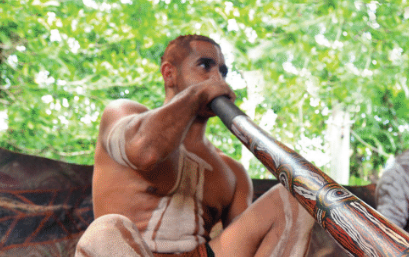VANISHING LANGUAGE
Over 250 Indigenous Australian language groups covered the continent at the time of European settlement in 1788. Today, only around 120 of those languages are still spoken, and many are at risk of being lost as Elders pass away. Language is more than just a means to communicate, it is an essential characteristic unique to people and communities, and plays a central role in a sense of identity. It is also the vehicle within which much cultural knowledge such as songs, bush tucker (native food) and traditional medicine is stored. From the earliest days of European contact, there was often an assumption that Indigenous Australian languages were of less value than English, and this view soon hardened into government policy, which was reinforced through education and employment practices. Aboriginal and Torres Strait Islander people were discouraged from speaking their languages and made to feel ashamed of using them in public. Eventually the link between generations of speakers was broken, so that many children had little or no knowledge of their traditional languages. Their parents were partial speakers, and their grandparents were the remaining few speakers of a language that, as the Elders, they alone could pass down to the next generation. Today Aboriginal and Torres Strait Islander people across Australia are speaking out about the need to protect, preserve and strengthen traditional languages. There is currently a wave of activity , with people in many communities working to learn more about their language, and to ensure they are passed on to the next generation before it is too late. (Reading text adapted from AIATSIS)

